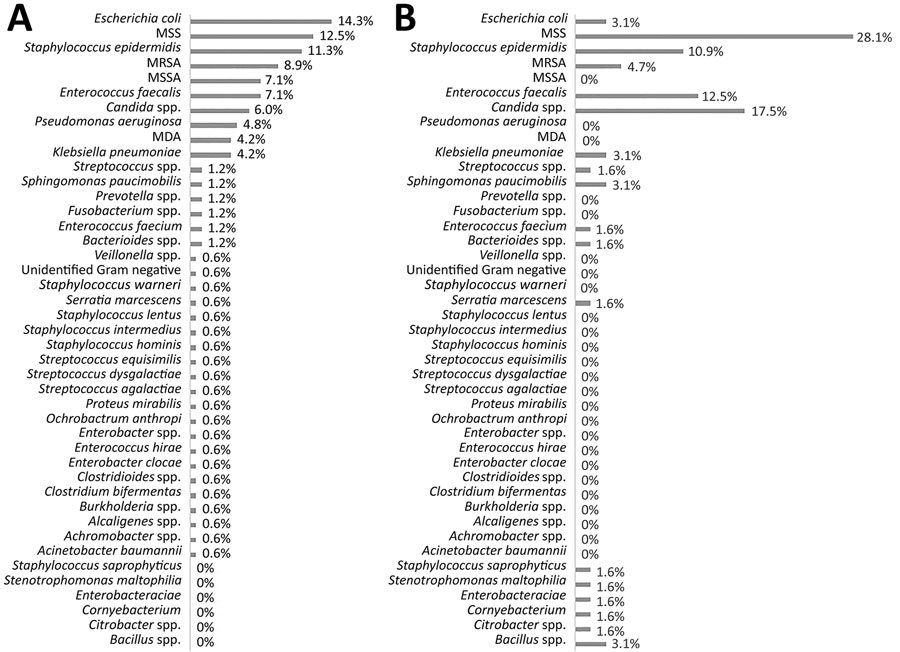Volume 27, Number 10—October 2021
Research
Bloodstream Infection Risk, Incidence, and Deaths for Hospitalized Patients during Coronavirus Disease Pandemic
Figure

Figure. Organisms responsible for laboratory-confirmed bloodstream infections during COVID-19 pandemic, Miami, Florida, USA, March 25‒October 27, 2020. A) COVID-19‒negative patients (n = 168). B) COVID-19‒positive patients (n = 64). COVID-19, coronavirus disease; MDA, organisms isolated during admission (defined as >2 organisms isolated from the bloodstream >48 hours apart during admission); MRSA, methicillin-resistant Staphylococcus aureus; MSSA, methicillin-sensitive S. aureus; MSS, multiple organisms isolated during bloodstream infection episode (defined >2 organisms isolated from the bloodstream within a 48-hour period from the index isolate).
Page created: July 15, 2021
Page updated: September 19, 2021
Page reviewed: September 19, 2021
The conclusions, findings, and opinions expressed by authors contributing to this journal do not necessarily reflect the official position of the U.S. Department of Health and Human Services, the Public Health Service, the Centers for Disease Control and Prevention, or the authors' affiliated institutions. Use of trade names is for identification only and does not imply endorsement by any of the groups named above.